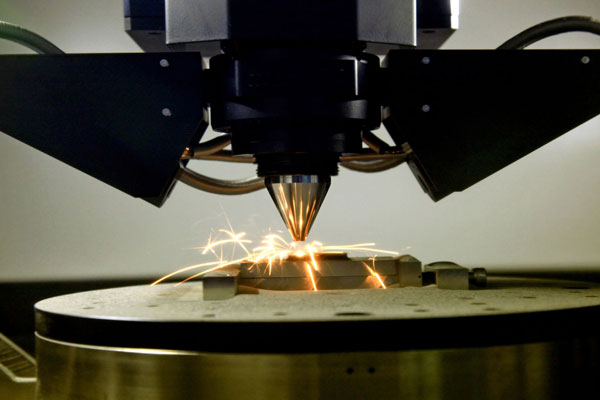
The 24/7 workforce is no longer a far-off concept. It’s a reality for many businesses that hope to compete in today’s global economy.
As the world becomes more and more connected, and companies are expected to meet increasing consumer demand, the traditional 9-to-5 is becoming a relic.
Madeline Bennett at The Telegraph says many companies no longer work within national boundaries, and thus aren’t confined to time zones. This combined with the collective demand for instant gratification among millennials (e.g. expecting a rapid response) has been the primary catalyst behind the 24/7 workforce.
Hot-desking, where employees share desks during different shifts throughout the day and night, has also become a common practice in many offices. With real estate costs swelling in many markets, businesses are looking to reduce their costs any way they can. Nadia Arain points out in Virgin Entrepreneur that some companies are able to lower their costs by as much as 30 percent with hot-desking.
This, of course, presents a challenge for FMs. What does it mean for an FM to be responsible for a building that people will be coming in and out of at all hours of the day and night? More importantly, how do they adapt to this trend?
We explore five ways to adapt below.
Identifying Main Areas of Energy Consumption
One of the biggest tasks for FMs is to determine where energy efficiency is needed most. According to Sempra Energy, energy in a typical large commercial building goes to four main areas:
- Lighting — 26 percent
- Cooling — 22 percent
- Ventilation — 17 percent
- Office Equipment — 15 percent
Consequently, these are the sources of energy consumption that FMs will want to place the bulk of their attention. Any inefficiencies in these areas could increase energy costs, especially when you’re talking about an always-on workforce.

Lighting
Accounting for more than a quarter of all energy consumption, lighting should be an FM’s initial focal point. So, what are some ways to implement a more efficient lighting system?
Daylighting is a great place to start. This is the practice of harnessing natural light and direct sunlight to reduce the need for electric lighting within a building. Gregg D. Ander explains in the Whole Building Design Guide that daylighting typically saves companies anywhere from 10 to 50 percent, depending upon the application.
An added advantage of daylighting is that it can reduce cooling costs during the warmer months because less heat energy is produced. Ander also points out that reducing electrical lighting through proper daylighting techniques can lower cooling costs by an extra 10 to 20 percent.
Of course, this is only applicable during the daytime hours (which can be inhibited by cloudy weather). However, there are some effective strategies for optimizing lighting during all other times.
One is to ensure your facility is no longer using T-12 fluorescent lamps. Instead, they should be replaced either by T-8s or T-5s along with matching ballasts. EarthLED explains that T-12s are nearly an inch wider in diameter. The smaller the diameter, the more energy efficient the lighting will be.
Another option is installing occupancy sensors instead of conventional indoor light switches. These are ideal for office spaces where certain rooms or areas go temporarily vacant at times.
Werner Electric mentions that occupancy sensors can help buildings achieve a lighting reduction anywhere from 13 to 90 percent. It’s especially beneficial for large office buildings and creates an added convenience for building operators and employees, as they don’t have to manually turn lights on and off.
FMs may also want to invest in a full-on lighting controls solution, which can be managed on-site or remotely. This type of solution is totally customizable and includes both control and occupancy sensors.
HVAC Systems
Cooling and ventilation account for a combined 39 percent of energy consumption. Therefore, optimizing the efficiency of an HVAC system is another a major priority.
Carl Ian Graham writes at The Whole Building Design Guide that using high-performance HVAC equipment can translate to a noticeable reduction in energy costs that typically ranges between 10 and 40 percent.
FMs are adapting to the 24/7 workforce by modernizing outdated HVAC systems through the use of digital controls and more efficient motors and fans. While this does require a considerable investment initially, Graham points out that many companies realize a payback within three to five years.
When it comes to temperature control, research indicates that there is an ideal setting. In fact, Berkeley Lab states that data across 24 studies found that 71 degrees Fahrenheit is optimal for maximum productivity. (We did a deep dive into optimal building temperatures here).
This is a good number to stick with during the cooler months because a temperature rise above 71 degrees tends to result in performance dropping. Not only can this increase employee output, but it can result in energy savings, as well.
However, this won’t usually be conducive to maximize energy efficiency during the warmer months. That’s why the Direct Energy team recommends adjusting the indoor temperature to 76 degrees or more during this period. This should be adequate for keeping workers comfortable without wasting energy.

Office Equipment
Although it’s not responsible for as much energy consumption as lighting and HVAC systems, office equipment can definitely be a drain if left unchecked.
The team at Constellation discusses some strategies for choosing energy-efficient office equipment. Some of their key points include:
- Selecting printers with quality settings because a high-quality print isn’t always necessary for all documents and uses more energy.
- Using printers and copiers that offer sleep mode and automatic shut-off.
- Using ENERGY STAR-certified computers and monitors.
Surge protectors in particular can be “vampire power” drainers, they write, which means these devices devour energy even when they’re not in use. Megan Treacy at TreeHugger points out that surge protectors are one of the factors that result in Americans spending $19 billion per year in vampire electricity costs.
Constellation suggests choosing surge protectors with a maximum of 10 outlets per strip (any more can waste energy).
It’s also becoming more common for FMs to use smart power strips. Nathan Chandler writes at HowStuffWorks that these energy efficient power strips minimize power consumption by shutting down power to equipment that is in standby mode.
Predictive Analytics
Predictive analytics combined with big data has numerous applications in the business world, one of which is building management and increasing energy efficiency. FMs can utilize predictive analytics to closely monitor energy consumption and collect information that enables them to fine-tune multiple aspects of operations.
Panoramic Power CEO Yaniv Vardi explains in the Predictive Analytics Times that we’re seeing a convergence between granular visibility via device-level monitoring and macro-level analytics to dramatically increase operational efficiency. In other words, big picture and small picture become simultaneously visible.
FMs can carefully monitor things like building systems, electrical equipment and motors in real-time, which enables them to keep a close eye on a facility’s energy print. Not only does this contribute to better energy efficiency, but it’s possible to predict when equipment is likely to require maintenance. It’s a win-win situation.
Josh Lich also points out at Oracle Utilities that America’s smart meters were already generating a massive amount of data back in 2014. In fact, these meters were generating one billion customer data points each day, which was 3,000 times the information previous meters could provide.
Every facility will inevitably have times when energy usage is higher than others. Doug McDougall of Sustainable Planet explains that these periods of peak demand can add up to 30 percent of a facility’s monthly utility bill.
The real-time visibility provided by predictive analytics enables FMs to identify demand peaks in a way that’s impossible by simply looking at an energy bill. They can then use that data to schedule shifts with predictable demand curves as well as spot irregularities that could be the result of a mechanical system malfunction.
As we move deeper into the 21st Century, predictive analytics will become increasingly potent and can make a dramatic difference in energy usage. The technology is there. It’s just a matter of FMs properly utilizing it to make their facilities more efficient.

The 24/7 Workforce is Here to Stay
Having employees on-site 24/7 is gradually becoming the new norm. Erin Reid and Lakshmi Ramarajan, writing in the Harvard Business Review, talk about the normalcy of companies having around-the-clock availability and the generalized acceptance of this trend. In fact, 43 percent of people are “acceptors” in being totally devoted to their work and being part of a workplace that’s in operation at all times of the day.
As the global economy attains even firmer footing, more and more facilities will inevitably run 24/7. In order to account for this trend, FMs must adapt and continually devise suitable strategies.
The techniques mentioned here should serve as a good starting point and ensure that facilities are capable of meeting demand without needlessly wasting energy and resources.
Credits:
rawpixel/©123RF Stock Photogaudilab/©123RF Stock Photo
sspopov/©123RF Stock Photo
lightpoet/©123RF Stock Photo
